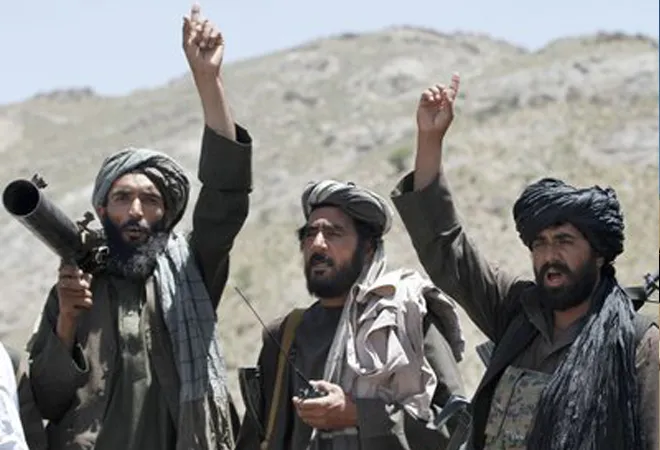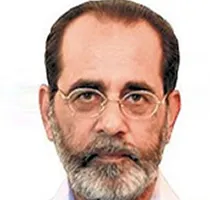The American exit from Bagram, their Afghan airbase, on July 2 is the enduring symbol of the US withdrawal from its ‘longest war’. The very next day, 13 districts fell to the Taliban, and the momentum hasn’t slowed. Yet the process of US disengagement was set in motion nearly a decade ago. In February 2011, addressing the Asia Society, Hillary Clinton (then Secretary of State) reflected the policy shift when the preconditions for talks with the Taliban – renouncing violence and laying down arms, accepting the Afghan constitution and breaking ties with terrorist groups like Al Qaeda, were converted into talk outcomes.
Pakistan’s decade long investment in providing safe haven and sanctuary to the Taliban was finally paying off. The next goal was ensuring Taliban’s legitimacy, something the regime had lacked in the 1990s because only three countries (Pakistan, UAE and Saudi Arabia) recognised it. Legitimisation process began with the establishment of the Doha office in 2013, followed by the Pakistan-initiated Quadrilateral Coordination Group talks (the US, Afghanistan, China, Pakistan and Taliban) and the Kabul, Heart of Asia and Moscow processes. All through, the US limited its role to a facilitator for the ‘Afghan led and owned’ peace process.
The breakthrough came when the Trump administration initiated direct talks with the Taliban, appointing ambassador Zalmay Khalilzad as Special Representative for Afghanistan Reconciliation. He began by setting out four objectives – a ceasefire, cutting links with Al Qaeda, IS and other terrorist groups, intra-Afghan peace talks and withdrawal of foreign forces, underlining that “nothing is agreed until everything is agreed”. However, he had no Plan B, and the Taliban called Khalilzad’s bluff. Eventually, the US accepted the Taliban/ISI Plan A – a timebound unconditional US withdrawal in return for safe passage. Further, Taliban also enhanced their legitimacy at the expense of the Kabul government which was pressured by the US into releasing some 5,000 Taliban insurgents in its custody.
The 2020 Doha Agreement was neither Afghan-led or owned but received unanimous endorsement of the UN Security Council. Perhaps just as well that it was signed on February 29 for by the time its anniversary comes around in 2024, its ignominious end will be history.
President Joe Biden had long believed that US needed to extricate itself from the unending counter-insurgency in Afghanistan, limiting its role to counter-terrorism. On April 14, when he declared 9/11 as the deadline for completing the US withdrawal, the Taliban controlled 76 districts; today, the number stands closer to 220. Even after these Taliban gains, Biden has maintained that ‘US is not into nation-building’ and “it is the Afghan peoples’ right and responsibility to decide their future”.
Factions in the Taliban
Now that the US exit is a reality, Pakistan, Iran, Russia and China may be recalling the old saying – be careful what you wish for – as they gear up to a new challenge of how to persuade the Taliban against overplaying their military hand and to accept power sharing?
Whether or not they succeed depends on the Taliban – how much they have changed and whether they are as cohesive and unified as they were under Mullah Omar in the 1990s. The disclosure in 2015 that Mullah Omar was dead (he had died in 2013) led to an internal power tussle. Mullah Akhtar Mansour (Alizai Pashtun) won out over Mullah Omar’s son Mullah Yaqub (Hotaki Pashtun). Mansour brought in a couple of Tajik and Uzbek faces to broadbase the Rehbari Shura while stepping-up attacks in Afghanistan to gain acceptance by the local commanders. However, within a year, he was killed in a US drone attack.
In 2016, Mullah Haibatullah (a Noorzai from Panjwai) took over, this time with two deputies, ISI favourite Sirajuddin Haqqani (a Zadran from Paktia and son of Jalaluddin Haqqani), managing the Peshawar shura and Mullah Yaqub who was backed by Qayyum Zakir, involved with the drug trade, and Ibrahim Sadar, the Helmand based commander carrying more weight in the southern provinces. Reports indicate that he is favourably inclined for talks.
Opposition comes from Haqqani who has linkages with the other groups operating in the northern provinces. These include 500 strong Al Qaeda in Indian Subcontinent (AQIS). Other elements include the IS-Khorasan and the Pakistan based groups (TTP, LeT, JeM, al-Badr, Lashkar-e-Jhangvi and Lashkar-e-Islam). How the loyalties and allegiances of these groups function on the ground is unclear.
In addition, Iran has a battle hardened Hazara Shia unit constituting the Syria-returned Fatemiyoun brigade, built up by Gen Ismail Qaani who has succeeded Qasim Soleimani as the Al Quds commander to defend Hazarajat, if necessary.
A third grouping that has gained prominence is the Doha based Taliban under Mullah Abdul Ghani Barader, co-founder of the Taliban and married to Mullah Omar’s sister. The Doha group has managed to get their families over and as the public face of the Taliban, are more inclined to a negotiated settlement.
Recent visits by Taliban delegations to Tehran and Moscow and the meetings in Dushanbe and Tashkent appear to be attempts at judging how receptive the Taliban are to resuming the intra-Afghan talks that have been in limbo for months and lowering the violence levels in Afghanistan.
All groups are happy as long as the military option keeps yielding results but who will call the shots when it comes to establishing governance structures and negotiating a power sharing arrangement? The latter also depends on whether the Kabul regime can present a unified front and whether Pakistan, Iran, Russia and China can prevail upon the Taliban’s fighting units. Estimates of Taliban strength run to around 60,000 whereas the Afghan security forces are over 300,000. However, whether the latter can keep their morale and maintain the integrity of their chain of command are questions that depend on the Kabul leadership which has spent last two years sniping at each other.
The last meeting of the extended-troika (US, China, Russia and Pakistan) in Moscow on March 18 recalled the UN Security Council resolution of last March that they “do not support the return of the Islamic Emirate of Afghanistan”, though they have been displayed no initiative since. However, recent visits by Taliban delegations to Tehran and Moscow and the meetings in Dushanbe and Tashkent appear to be attempts at judging how receptive the Taliban are to resuming the intra-Afghan talks that have been in limbo for months and lowering the violence levels in Afghanistan. In a June 22 op-ed in the Washington Post, Pakistan PM Imran Khan wrote, “We oppose any military takeover of Afghanistan, which will lead only to decades of civil war, as the Taliban cannot win over whole of the country, and yet must be included in any government for it to succeed”.
Compared to other external actors, India’s leverage is limited. There are three reasons – geography, in not sharing a border; limited resources, both financial and military; and third, India was late in realising that since 2013, the mainstreaming of Taliban was letting Pakistan expand its security space in the region. Instead of sending out feelers to the Taliban, India chose to find comfort in the mantra of ‘Afghan-led Afghan-owned peace process’.
According to senior Qatari official Mutlaq bin Majed al Qahtani, Indian officials have recently been in discreet contact with Taliban. However, as the old saying goes, one doesn’t learn swimming by jumping into a flooded river. Also, FOMO cannot drive strategy. India’s strength is that it is perceived as a benign power with an influence that cuts across ethnic groups. But it lacks coercive power of the other actors.
The Taliban may or may not have changed, Pakistan may or may not exert the same influence, but Afghanistan has certainly changed in the last two decades. Nearly three-fourths of Afghan population is below 30 and used to living in a conservative but open society; 60% of the population enjoy internet access.
Developing options demands patient and sustained engagement across the board; putting all eggs in one basket is not a good position to be in. Distance can provide America the luxury of non-engagement but our history and geography dictate otherwise for us, especially given our hostile relations with Pakistan. Just as water finds its own level, the natural political dynamics of the region will assert itself gradually provided India chooses its partners well and is responsive to the changing dynamics.
During the 1990s, Taliban fighters aggravated the situation in Kashmir. Will they do it again? It depends on the degree of ISI control. If India develops direct links, we could explore an assurance like the Taliban spokesman Suhail Shaheen provided China regarding the ETIM (East Turkestan Islamic Movement). How credible such an assurance might be is an open question. The answer is to replace episodic engagement because the neighbourhood merits it.
The underlying strategic logic of the Zaranj-Delaram highway, Chahbahar port and the connectivity provided by the INSTC (International North-South Transport Corridor) to Afghanistan and Central Asia still holds and together with our natural partners, can help us navigate the uncertainties that lie ahead.
This commentary originally appeared in India Today.
The views expressed above belong to the author(s). ORF research and analyses now available on Telegram! Click here to access our curated content — blogs, longforms and interviews.

